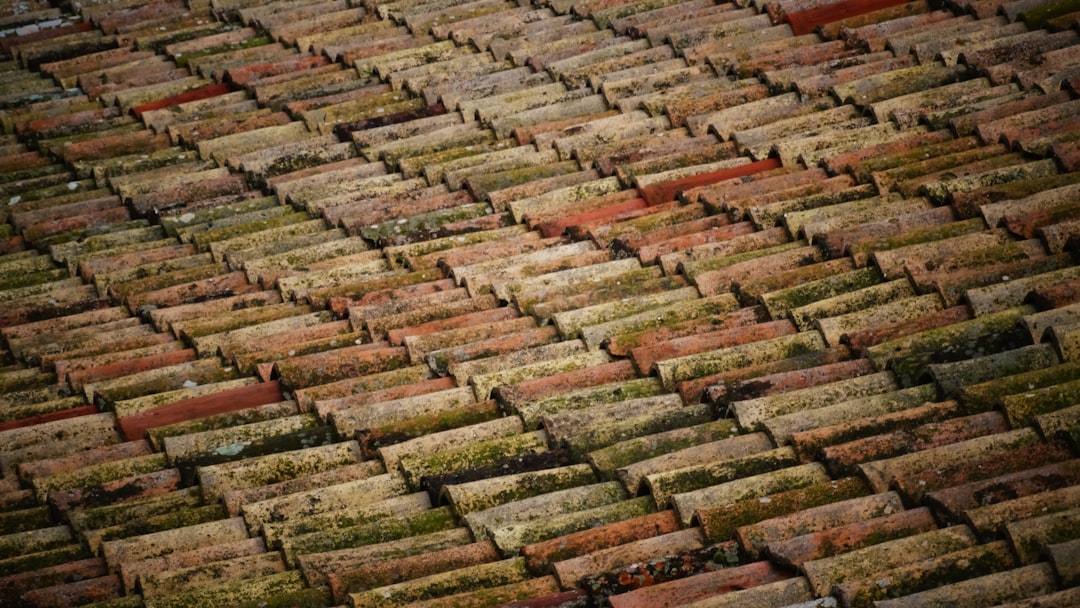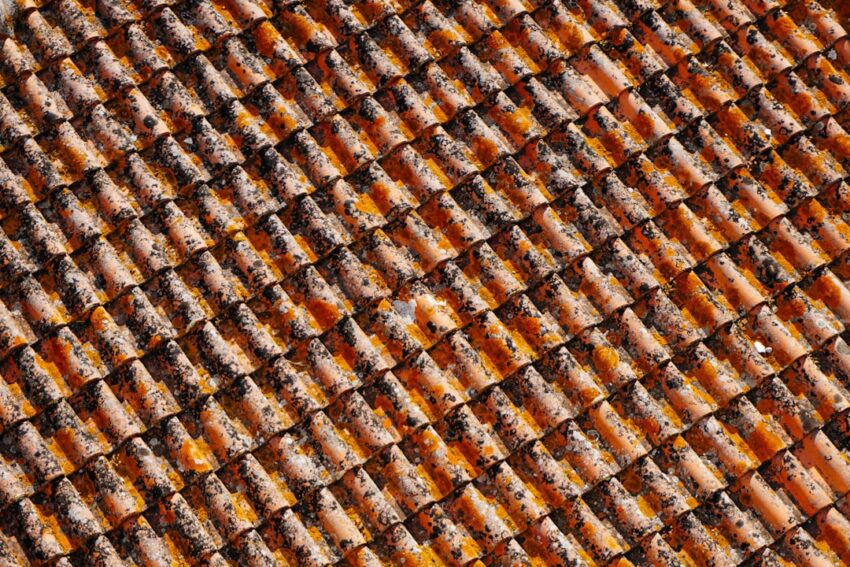Installing a flat roof involves a multi-stage process that demands careful consideration of the existing building structure, material selection, and adherence to best practices and local codes for a durable and efficient result. The right materials and design are chosen based on the building's load-bearing capacity, local climate, and specific needs such as size, slope, budget, and longevity. A vapor barrier is installed first, followed by insulation for energy efficiency, and a base layer for an even surface. Flat roof systems like BUR, TPO, or EPDM are then applied, each with its own advantages in terms of cost, durability, and maintenance. Regular maintenance is crucial to ensure the longevity of these systems, as it helps prevent damage and extends their lifespan. Advancements in flat roof technology have led to improved energy efficiency and structural integrity through materials like TPO, which can address issues like drainage and leaks while providing long-term solutions for both commercial and residential properties. The key is selecting the right roofing system tailored to your building's needs and maintaining it consistently for optimal performance.
Exploring the intricacies of flat roof systems for both commercial and residential buildings, this article delves into the essentials of effective roofing. From weighing the benefits and considerations of such systems to understanding the installation process, we examine the key factors influencing their implementation. A detailed analysis of various material options is provided, comparing costs, durability, and maintenance needs to help you make an informed decision. Additionally, we outline expert strategies for maintaining these roofs to maximize their lifespan. Addressing common issues through professional services ensures optimal performance. Through case studies highlighting successful flat roofing projects, this article serves as a comprehensive guide to navigating the world of flat roof solutions in building maintenance and construction.
- Understanding Flat Roof Systems: Benefits and Considerations for Commercial and Residential Properties
- The Installation Process: What to Expect When Implementing a Flat Roof on Your Building
- Material Options for Flat Roofs: Comparing Costs, Durability, and Maintenance Requirements of Different Materials
- Expert Maintenance Strategies to Prolong the Lifespan of Your Flat Roof
- Common Issues with Flat Roofs and How Professional Services Can Address Them
- Case Studies: Successful Flat Roofing Projects in Commercial and Residential Spaces
Understanding Flat Roof Systems: Benefits and Considerations for Commercial and Residential Properties

Flat roof systems are a practical solution for both commercial and residential properties, offering unique benefits that cater to different needs and architectural styles. For commercial establishments, flat roofs provide an expansive space ideal for HVAC units, solar panels, and rooftop gardens, which can contribute to energy efficiency and sustainability efforts. They also allow for easier access for maintenance tasks, which is a significant advantage for large-scale buildings. In residential settings, these systems are valued for their aesthetic appeal and the seamless integration with other architectural elements. They offer a versatile surface that can be designed for various purposes, from additional living space to providing a quiet retreat.
When considering flat roof services, it’s crucial to assess the building’s specific requirements and local climate conditions. Proper installation, material selection, and regular maintenance are key factors in ensuring the longevity and performance of these systems. For instance, materials like PVC, TPO, or EPDM are commonly used due to their durability and resistance to extreme weather. Additionally, the choice between a built-up roof, modified bitumen, or single-ply membrane depends on the building’s budget, desired lifespan, and environmental impact. Professional roofing contractors can guide property owners through these considerations, ensuring that the chosen system aligns with the building’s needs and the owner’s long-term goals. Regular inspections and timely repairs are essential to maintaining a flat roof’s integrity, extending its lifespan, and safeguarding the structure it covers.
The Installation Process: What to Expect When Implementing a Flat Roof on Your Building

When considering the installation of a flat roof on your building, understanding the process is key to ensuring a successful and long-lasting outcome. The installation process for flat roofs typically begins with an inspection and assessment of the existing structure to determine its suitability for a flat roof system. This initial step is crucial as it informs the choice of materials and design, ensuring that the new roof can effectively support the intended load and withstand environmental conditions specific to your location.
Once the site has been prepared and the appropriate design selected, the actual installation commences. The process starts with the installation of a vapor barrier to protect against moisture damage. This is followed by the placement of insulation layers to maintain energy efficiency and enhance the building’s thermal performance. Next, a base layer is applied to create a level surface for the final roofing membrane. Various types of flat roof systems are available, such as built-up roofing (BUR), thermoplastic olefin (TPO), or ethylene propylene diene monomer (EPDM) systems. Each system has its advantages and is selected based on factors like the building’s size, slope, budget, and desired longevity. The final step involves securing the membrane with adhesives or fasteners and sealing all joints and penetrations to ensure watertight integrity. Throughout the installation process, professional roofing contractors will adhere to industry best practices and local building codes to guarantee a quality installation that safeguards your building against leaks and structural damage over time. It’s advisable to engage with experienced roofing specialists who can provide detailed guidance and execute the project efficiently, ensuring your flat roof is robust, resilient, and well-integrated into your property’s architecture.
Material Options for Flat Roofs: Comparing Costs, Durability, and Maintenance Requirements of Different Materials

When considering flat roof services for both commercial and residential buildings, selecting the appropriate material is paramount. Among the various options available in roofing, each material presents its own set of cost implications, durability factors, and maintenance requirements. For instance, traditional built-up roofing (BUR) systems are known for their longevity and affordability, making them a popular choice for budget-conscious property owners. These systems are typically composed of multiple layers of bitumen, saturated felt, and surfacing materials, which contribute to their long service life but also increase the weight load on the structure, an important consideration for existing buildings.
On the other hand, single-ply membrane roofing, such as PVC (polyvinyl chloride) or TPO (thermoplastic olefin), offers a cost-effective and lightweight alternative with enhanced durability and energy efficiency. These materials are resistant to ultraviolet radiation, chemicals, and fire, extending their lifespan significantly. They also tend to be easier to install and repair, which can reduce long-term maintenance costs. Additionally, single-ply membranes often come with reflective surfaces that can lower the building’s cooling demands, contributing to energy savings. When evaluating these options, it’s essential to weigh the upfront installation costs against the projected lifespan and the total cost of ownership, including maintenance and potential energy savings over time. Each material offers unique benefits tailored to different needs, and a thorough understanding of these will guide property owners in making informed decisions for their flat roof services.
Expert Maintenance Strategies to Prolong the Lifespan of Your Flat Roof

Regular upkeep is pivotal for the longevity of flat roof systems. Commercial and residential property owners should prioritize preventative maintenance to extend their flat roof’s lifespan. Expert strategies encompass thorough inspections, ideally conducted after extreme weather events or seasonal shifts, to identify and address potential issues proactively. These inspections should scrutinize the condition of seams, membranes, and drains, as these are common weak points prone to leaks or damage.
Effective maintenance also involves meticulous cleaning to remove debris and vegetation that can trap moisture and cause decay. Roofing professionals employ specialized techniques to clear gutters and downspouts, ensuring unobstructed water flow. Additionally, the application of protective coatings can shield the roof from UV rays and environmental pollutants, further mitigating wear and tear. By implementing a regular maintenance schedule tailored to the specific needs of your flat roof, property owners can significantly enhance its durability and performance, thereby deferring costly replacement and extending its serviceable life.
Common Issues with Flat Roofs and How Professional Services Can Address Them

Commercial and residential flat roofs present unique challenges that necessitate specialized attention. One common issue with flat roofs is water pooling, which can occur due to inadequate slope or poor drainage systems. Standing water can lead to moisture intrusion, causing structural damage over time and potentially compromising the integrity of the building. Professional roofing services address this by inspecting the roof’s design and installing or adjusting drains and scuppers to ensure proper water runoff. They may also apply waterproof coatings to protect against leaks and seal any existing cracks or seams that could allow water ingress.
Another prevalent issue is thermal expansion and contraction, which can cause flat roofs to crack or split over time. These cracks can lead to energy inefficiencies as they allow conditioned air to escape and external air to enter. Roofing professionals tackle this by conducting thorough inspections to identify and repair such damage. They may also recommend reflective roofing materials or energy-efficient systems that can mitigate the effects of temperature changes and improve the building’s overall energy performance. Additionally, regular maintenance can prevent minor issues from becoming major ones, ensuring the longevity and efficiency of flat roofs in both commercial and residential settings.
Case Studies: Successful Flat Roofing Projects in Commercial and Residential Spaces

In recent years, the implementation of flat roof services has proven to be a cost-effective and efficient solution for both commercial and residential properties. A notable case study involves the retrofitting of a large commercial warehouse with a high-performance thermoplastic olefin (TPO) membrane. This project successfully addressed the building’s drainage issues, which had been problematic due to the flat surface. The TPO membrane, known for its durability and reflective properties, significantly reduced energy costs by mitigating thermal shock and extreme temperature fluctuations. Additionally, the improved waterproofing measures ensured that the warehouse could operate without disruption from leaks or water intrusion.
On the residential front, a case study highlighting the application of a modified bitumen roofing system on a single-family home demonstrates the effectiveness of flat roof services in residential settings. The homeowners faced persistent leaks and structural concerns that were resolved with the installation of a robust, multi-layered membrane. This upgrade not only eliminated recurring water damage but also enhanced the longevity of the roof. The project underscored the importance of selecting the right materials and installation techniques tailored to the specific needs of residential flat roofs. Both examples serve as testaments to the versatility and reliability of flat roofing solutions when executed by experienced professionals, emphasizing their role in maintaining building integrity and functionality.
Roofing solutions for flat roofs are pivotal for both commercial and residential structures, offering a range of benefits from energy efficiency to maximizing usable space. The installation process, detailed in this article, ensures that each flat roof is tailored to its unique environment and user needs, while the variety of materials available allows property owners to balance cost with durability and maintenance requirements. Regular upkeep, as outlined by industry experts, is key to extending the lifespan of these systems. Addressing common issues proactively can prevent more serious damages, ensuring longevity and performance. The case studies presented underscore the effectiveness of flat roofing installations across different settings, highlighting their role in modern building practices. Ultimately, investing in quality flat roof services is a strategic decision for any property owner looking to protect their investment and meet their building’s needs effectively.
